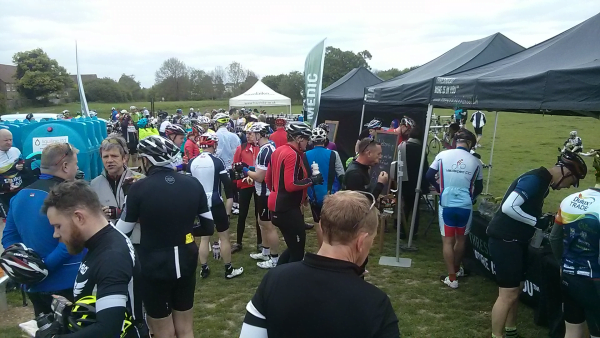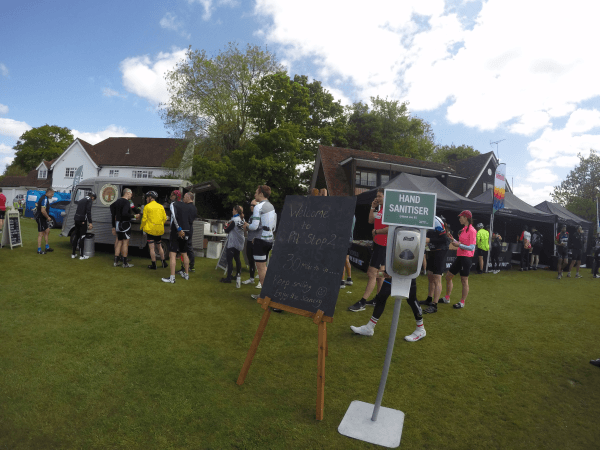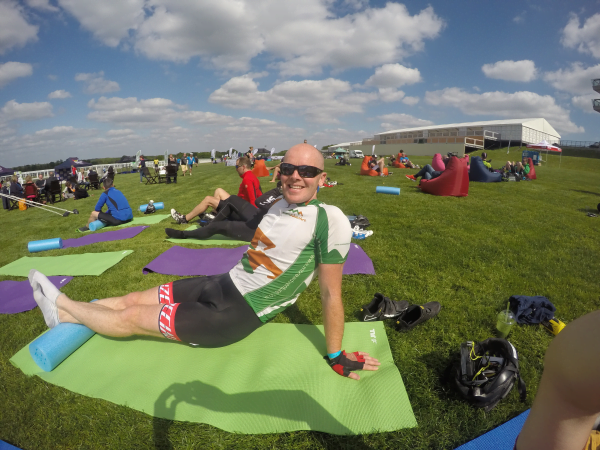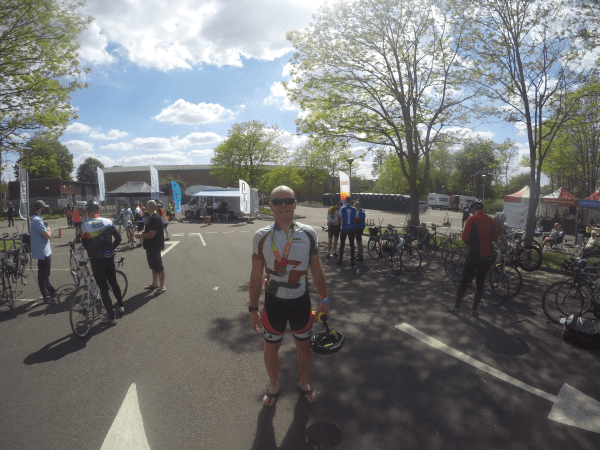3. Don’t overeat at the pitstops. It is very tempting to gorge on the delights at the pit stop, but try to moderate your gluttony. Feeling bloated when you get back on the bike is not good at all, plus your body will be focussing a lot of energy on digesting the food when it could be focussed on pedalling harder!
4. Take some cash with you. At the fuel stops there will hopefully be plenty of free food and drink but if (like me), you love a good coffee during a ride, you’ll probably have to pay in cash. I queued for 15 minutes, my debit card clutched in a caffeine-starved sweaty hand, only to realise that they didn’t take card payment! Water and energy powder (with caffeine) it is then…
5. Have a good meal the night before and a hearty breakfast the next day. This is common sense, but often nerves gets the best of us. It is essential that you have the fuel stored up to begin with, so don’t hold back on stocking up on some before the ride. A large fry-up however will probably not serve you too well, so try and stick to some slow-release oats, bananas or other fruit, and other carbohydrate-heavy breakfast choices.
6. Check out the weather forecast and wind direction. Having an idea of the weather will give you an insight into what to carry. Having experience riding in a variety of weathers will better place you to make the all-important decision of what to wear. Having a supply of suncream should the weather turn out nice could also be essential (it is very easy to get burnt on a bike…we know this from hard experience). The wind direction will also be a factor – will you be facing a headwind all day, or will it turn into a tailwind after lunch? Wind makes a huge difference to rides and, psychologically, this could be the boost you need to get you through the rest of the ride.
7. Carry only what you think you will need. This may sound simple, but it works both ways, often people will carry too much on their bikes and their person (the most we saw was a large saddlebag, a bumbag and a rucksack) which could simply not be needed. Trust us, when you hit 85 miles, you’ll resent every kilogram when climbing that next hill. The flipside of this of course is being appropriately prepared for the weather, so ensure you have only the essentials (TIP: you do not need a pannier rack). In a previous post there’s a list of what I carry HERE.
8. Tyres, tyres, tyres! It is a devastating sight to see riders at the roadside fixing punctures only a few miles in. We stress in all of our itineraries and joining instructions the importance of tyres (especially when you have a ferry to catch!). Always replace tyres before you need to and select the correct tyre for the correct purpose. Using the tyres that a) the bike arrived with (these tend to be usually pretty awful) and b) you have ridden whilst training and put a good few hundred miles into, is asking for trouble. In all the miles I ride whilst guiding throughout the year, I usually end up with one puncture, because I choose the right tyre in the first instance, and replace them before I need to.
9. Stretch and roll, stretch and roll. At the London Revolution ride, there were rollers and mats made available for riders as they finish. They are there for a reason and as tempting it is to just collapse, scoff your face with food then sleep, taking some time to stretch out your weary muscles and use a roller can make a huge difference, particularly if, like me, you’d decided a one-day event isn’t enough and had it all to come again the following day (what was I thinking?!).




